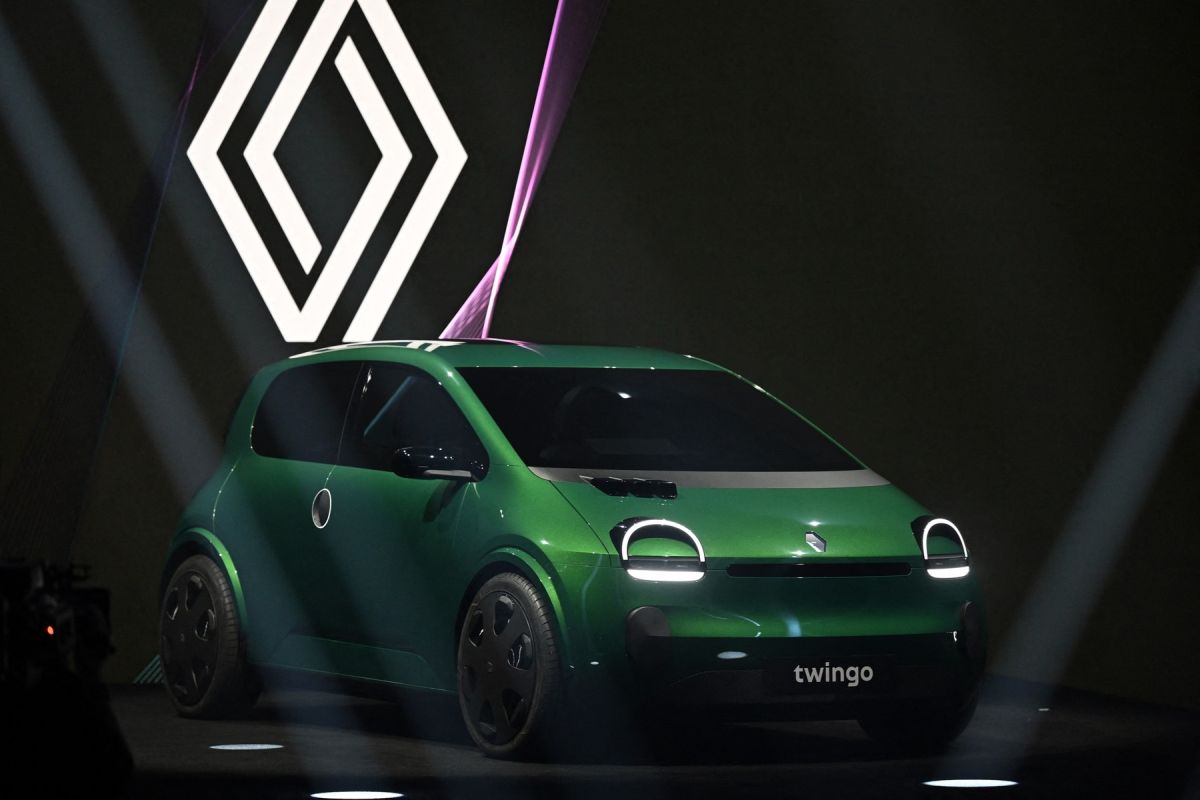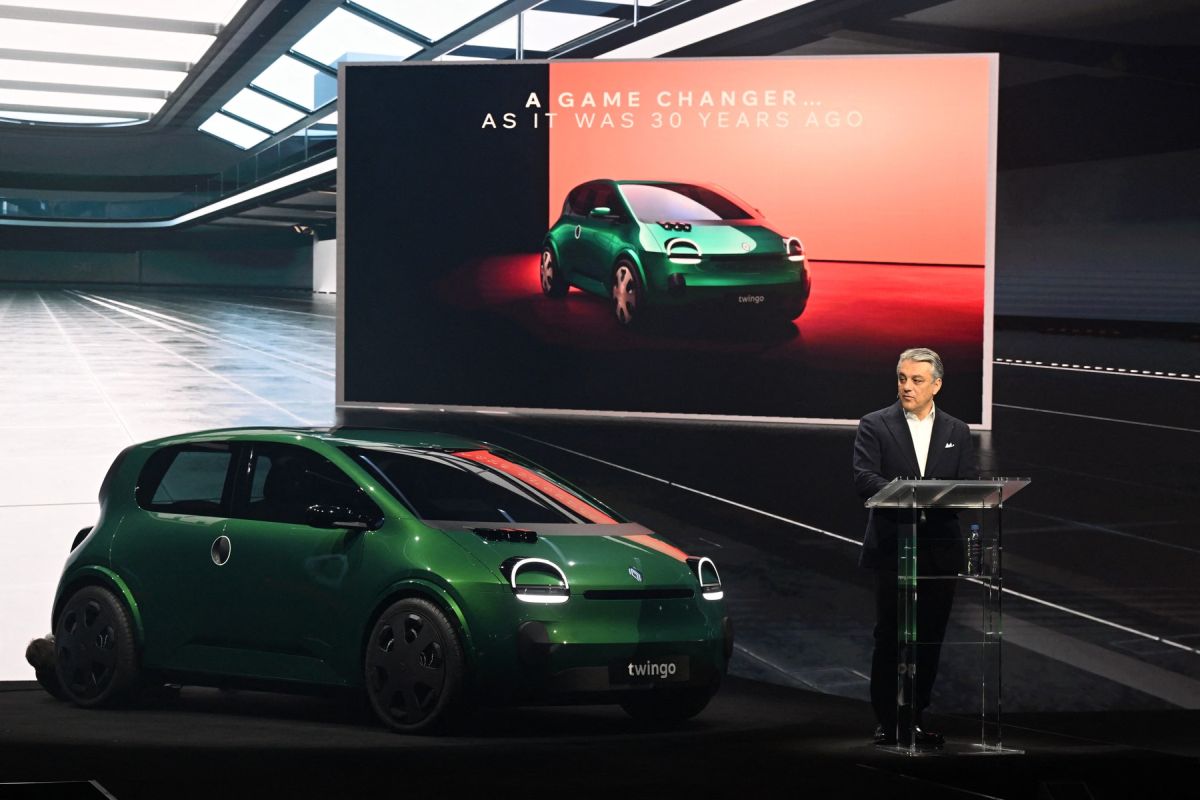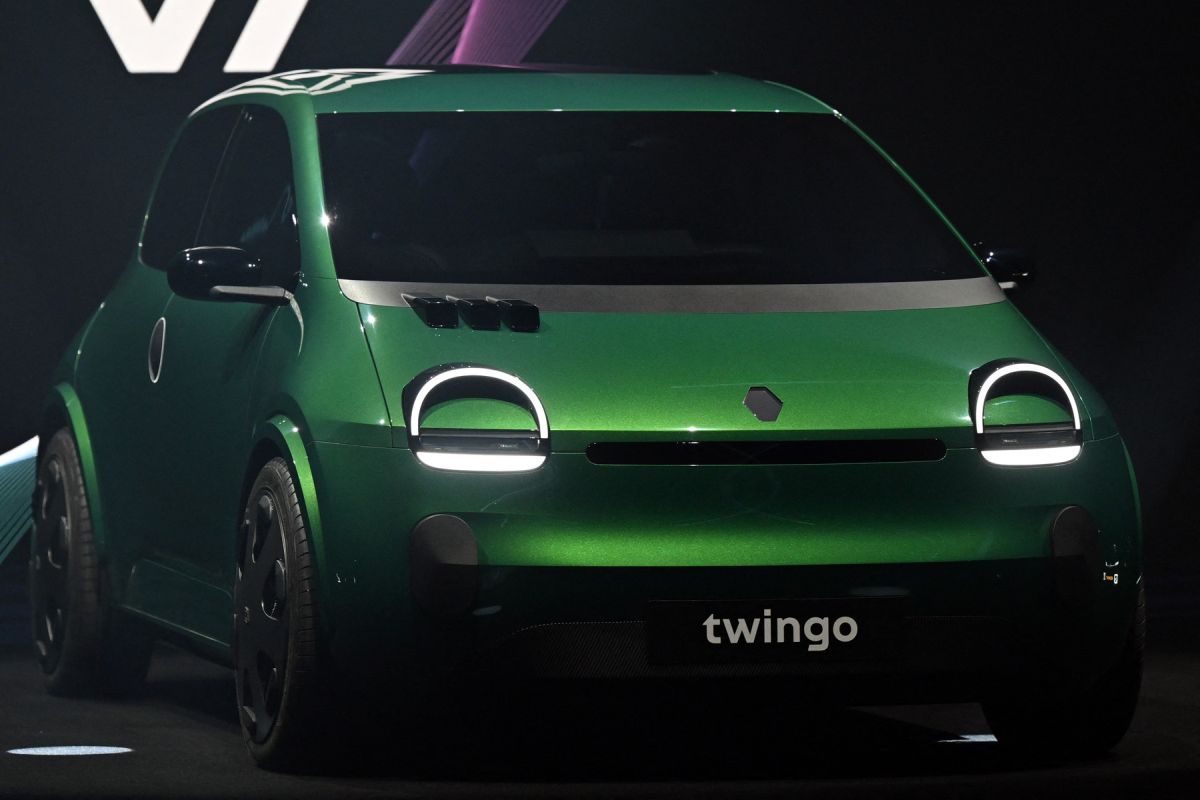
Renault will use the Twingo name for the small electric city model, which will be produced in Europe and launched in 2026 at a price below 20,000 euros. The company promises to reduce production costs to be able to sell the car at this price, and will insist on optimizing the battery.
Most likely, the car will be produced at the Renault plant in Slovenia. Renault Twingo is a name that has been present in Europe for 30 years, the first generation was released in 1993. It was updated three times, and the second generation was presented in 2007. The third generation was released in 2014. In 2020, it’s the Twingo ZE. an electric version based on the Smart EQ Forfour architecture was also launched.

Photo source: MIGUEL MEDINA / AFP / Profimedia
The new all-electric Twingo is also inspired by Japanese city cars, the so-called ‘kei cars’, which are very popular in Japan, and the New Twingo will be the fifth car produced by Ampere, Renault’s new electric car division. One model has already been released: Megane E-Tech, and three more will appear before Twingo: Scenic E-Tech, Renault 5 and Renault 4.

Renault says it aims to significantly reduce production and battery costs in several ways. The chapter on batteries was strongly emphasized by the head of Renault, Luca de Meo, who says that there is no need to install expensive, heavy and overcapacity batteries on electric cars that drive almost all the time in the city, on short distances and at low speeds.

Photo source: MIGUEL MEDINA / AFP / Profimedia
The head of Renault says that the new Twingo will be an answer to Chinese brands that still produce cars in Europe. Luca de Meo said it would take just two years from concept to launch.
The main rival of the new Twingo will be the Citroen New e-C3, which will cost from 23,300 euros, and will also have an option for 20,000 euros from 2025.
The cheapest electric model in the Renault group is the Dacia Spring, made in China, which costs around 21,000 euros without subsidies.
What Renault says about the “new Twingo”
It is the city vehicle par excellence: it has “best in class” energy efficiency with a consumption of only 10 kWh/100 km, CO₂ emissions during the life cycle are 75% lower than most internal combustion cars sold in the European market in 2023, as well as reduced consumption of raw materials due to its compact size. The European-made model will be available at a starting price of less than 20,000 euros (before subsidies), which will represent a cost to the customer equivalent to less than 100 euros per month.
Source: Hot News
Lori Barajas is an accomplished journalist, known for her insightful and thought-provoking writing on economy. She currently works as a writer at 247 news reel. With a passion for understanding the economy, Lori’s writing delves deep into the financial issues that matter most, providing readers with a unique perspective on current events.